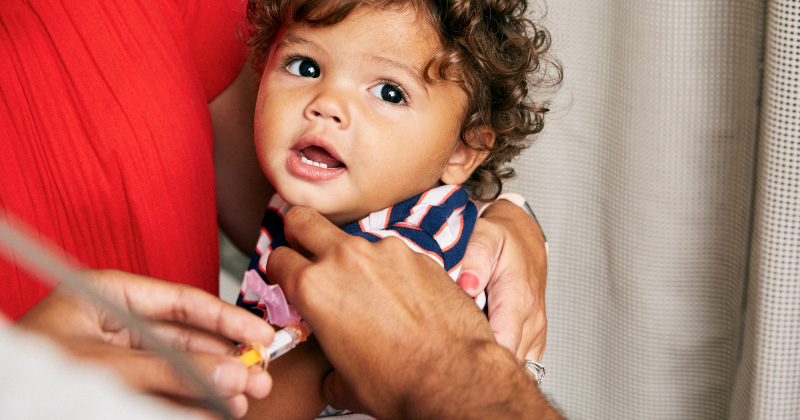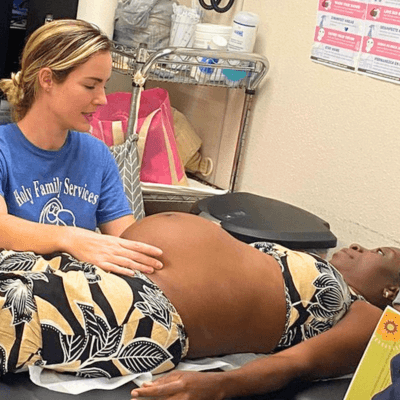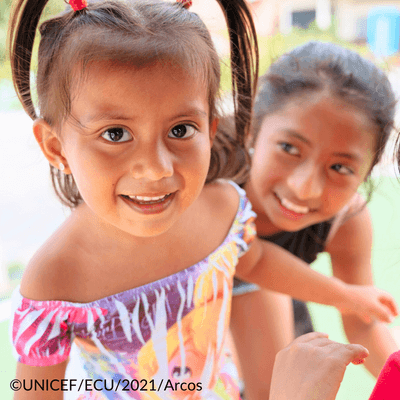Preparing for the Fall: The Critical Work of Keeping Patients Up To Date on Vaccinations in the Time of COVID-19
By Laszlo Madaras, MD, MPH, Chief Medical Officer at Migrant Clinicians Network
At the height of a COVID-19 spike at my hospital, when my community was listed as a hotspot in the national news, a man in his mid-40s presented with a fever, achiness, and a rash. He didn’t have a cough, but, recognizing that COVID-19 has such a wide range of presentations and seeing his flu-like symptoms in the non-flu season, we initially suspected the virus and had him tested. It wasn’t until the test came back negative that we began to think of the many health concerns with significant overlap in presentation. Eventually, being in Pennsylvania in the summer, we tested him for Lyme disease – and it came back positive.
Over the summer months we have seen once again the rise in Lyme disease, which has not subsided to make room for COVID-19, but rather has continued to be a health risk for those bitten by ticks. But with our health systems primed for response to COVID-19, it may be more difficult to keep in mind health concerns that are not COVID-19.
While some parts of world have started to see a waning of the SARS-CoV-2 virus infection COVID-19, here in the US, we continue to be vigilant as there have been incremental rises and hotspots throughout the country. Regardless of the state of the pandemic in our local community, we must not forget that there are other pathogens besides SARS-CoV-2 that can cause fevers, trouble breathing, cough, and a vague constellation of symptoms which are often difficult to diagnose.
And as the summer moves into autumn, we need to anticipate the start of flu season. Respiratory viruses including influenza and respiratory syncytial virus infection (RSV) can occur and may be confused with COVID-19 infection. Clinicians must be cognizant of the fact that COVID-19 has not replaced these other pathogens, but now must be considered in combination with the other possibilities in making a differential diagnosis.
In addition to keeping these illnesses at the top of mind, the best way to prepare for the coming influenza season is to make sure patients are up to date on pneumococcal vaccinations, and, once the flu vaccine is available, to make a concerted push for all to get the flu vaccine to reduce the possibility of multiple respiratory infections. This is especially important in the 2020-2021 season as we will also, in all likelihood, encounter the continuation of SARS-CoV-2. While there is no readily available vaccine for SARS-CoV-2 as of this writing, we still can minimize risk to all especially the most vulnerable by taking advantage of the vaccinations that we do have. This is because a patient who catches the flu or other respiratory viruses may in their weakened immune state be more susceptible to COVID-19, or may present with more severe COVID-19 symptoms if the patient’s lungs haven’t yet recovered from another previous respiratory virus. Additionally, it is possible for a patient to be fighting two viruses at once; doctors are already sounding the alarm on a “twindemic”.
Here's what clinicians can do as we head into the fall:
Encourage the flu shot: For the 2018-2019 season, just 45.3 percent of adults – including seniors -- got the flu vaccine. Many believe the flu shot is not necessary because of its lower effectiveness rate, but even when the flu shot is not a perfect match with the season’s strain of flu, it reduces the severity of the infection, which this year is more important than ever. Just as critically, the flu shot may lower the number of infections in our community, which protect the most vulnerable. This is where providers are especially needed: to share information about the flu shot, to illuminate the many reasons to get it, and to encourage patients to return to the clinic when it’s available.
Get patients up to date on pneumococcal series: Pneumococcal pneumonia, bacteremia, and meningitis are serious and deadly – and may potentially be more concerning this year, combined with COVID-19 -- but they can be avoided with the pneumococcal vaccines.
Two types of pneumococcal vaccines are available in the US: the pneumococcal polysaccharide vaccine (PPSV23; Pneumovax 23, Pnu-Immune) that includes 23 purified capsular polysaccharide antigens, and the pneumococcal protein-conjugate vaccine (PCV13; Prevnar 13) that includes capsular polysaccharide antigens covalently linked to a nontoxic protein that is nearly identical to diphtheria toxin. Please see the text box below for more on the two vaccines.
Plan ahead for vaccine outreach: At the heart of the challenge is the question of how to encourage patients to get their flu and pneumococcal vaccinations during the pandemic, when they may be reluctant to go to clinics for what they may determine is a non-essential activity. We encourage partnerships with leaders inside the communities that health professionals are trying to reach, and engaging and mobilizing community health workers. This should be done right now, even before the flu vaccine has been released. As a Medpage Today article pointed out, the federal government partnered with a national group of Black churches to promote immunizations in children before age two -- rates of which were then below 30 percent overall, and even lower in the Black community. People do not necessarily always trust doctors, but they might trust the church. Community health workers can effectively carry a public health message to the community, or it could be the spiritual community leader or minister. A vaccination public service announcement, as Medpage suggested, could be done with celebrities such as sports figures or stars like Elmo from Sesame Street.
Prepare for the COVID-19 vaccine: Health centers must work now to build up trust and develop networks of communication and partnership, before the COVID-19 vaccine becomes available. Working now to boost immunity to other diseases is critical work which will save lives by reducing the spread of preventable diseases that may lower immunity and consequently spread COVID-19. It will also build the networks needed with the community to be ready to mobilize when a COVID-19 vaccine becomes available.
The coming COVID-19 vaccine comes with lots of concerns. The public can become suspicious and hesitant to accept a vaccine that appears rushed and not fully tested. Often the most vulnerable populations who would best benefit from a functional vaccine are also the populations who have been mistreated historically during vaccine trials or forced into medical procedures without consent, and we must recognize and address this tragic racist past in our shared medical history.
We must continue our concerted outreach efforts, but that will not be enough. In the short term, transparency is critical. Experts such as the surgeon general and FDA staff should speak publicly and meet with Congress to interpret the data as they emerge. In the long term, we need to encourage health literacy in the US, including by teaching students how to look carefully at scientific data. Poor health literacy is only compounded by the spread of misinformation online and online organizations must take some responsibility. Finally and critically, health disparities and structural racism must be a national priority. More and more, we see how social factors influence health. COVID-19 has made long-standing underlying health inequities into front page news, as “essential” workers hit barrier after barrier to staying safe and getting care when needed. We must meaningfully re-evaulate and rebuild the social and health care structures that negatively impact the health and well-being of patients.
- Pneumococcal infections (eg, pneumonia, bacteremia, meningitis) are an important cause of morbidity and mortality in adults, especially among older adults and those with certain conditions, including immunocompromising conditions and asplenia.
- Two types of pneumococcal vaccines are approved for use in the United States:
- A pneumococcal polysaccharide vaccine (PPSV23; Pneumovax 23, Pnu-Immune) that includes 23 purified capsular polysaccharide antigens
- A pneumococcal protein-conjugate vaccine (PCV13; Prevnar 13) that includes capsular polysaccharide antigens covalently linked to a nontoxic protein that is nearly identical to diphtheria toxin
- We recommend pneumococcal vaccination for all adults ≥65 years old and adults <65 years old who are at risk for pneumococcal infection or severe complications from pneumococcal infection. Whether both PCV13 and PPSV23 are indicated and whether revaccination with PPSV23 is indicated vary based on patient age and risk status.
- For adults ages 19 to 64 years with certain chronic conditions (eg, chronic heart, lung, or liver disease, diabetes mellitus, smoking, alcohol use disorder), give a single dose of PPSV23.
- For adults with higher risk conditions (ie, immunocompromise, asplenia, cerebrospinal fluid leak, cochlear implant, or history of invasive pneumococcal disease), we give both PCV13 and PPSV23.
- For adults ≥65 years, we give PPSV23. We generally do not give PCV13 unless they have another indication for PCV13 (eg, asplenia, immunocompromise) because the incidence of pneumococcal disease caused by PCV13 serotypes is very low.
- When both PCV13 and PPSV23 are indicated, they should be given at separate time points to help ensure that protective antibodies to each vaccine develop. When possible, PCV13 should be given before PPSV23.
- For adults who have not received any pneumococcal vaccine previously, PCV13 should be given before PPSV23. If the primary indication for vaccination is age ≥65 years, PPSV23 should be given ≥1 year after PCV13. For adults between ages 19 and 64 years who require both vaccines, PPSV23 can be given ≥8 weeks after PCV13.
- For adults who have already received PPSV23, PCV13 should be given ≥1 year following PPSV23.
- Revaccination with PPSV23 is recommended for selected patients because immunity to polysaccharide vaccines wanes over time. Data supporting best practice are limited, and recommendations on revaccination vary among experts and clinical practice guidelines. Most authorities agree that at least one revaccination PPSV23 dose should be given to immunocompromised and asplenic individuals ages 19 to 64 years. Revaccination with PCV13 is not indicated for any age or risk group.
- Injection site reactions (tenderness, redness, swelling at site) are the most common adverse effects associated with pneumococcal vaccination in adults and are typically mild. Most are self-limited and resolve within a few days of vaccination. Warm compresses and nonsteroidal antiinflammatory drugs can help with symptom relief.
- Vaccination is contraindicated for patients who have a history of severe allergic reactions (eg, anaphylaxis) to either pneumococcal vaccine or any of its components (eg, diphtheria toxoid for pneumococcal conjugate vaccines).
Like what you see? Amplify our collective voice with a contribution.
Got some good news to share? Contact us on our social media pages above.
Return to the main blog page or sign up for blog updates here.
- Log in to post comments







